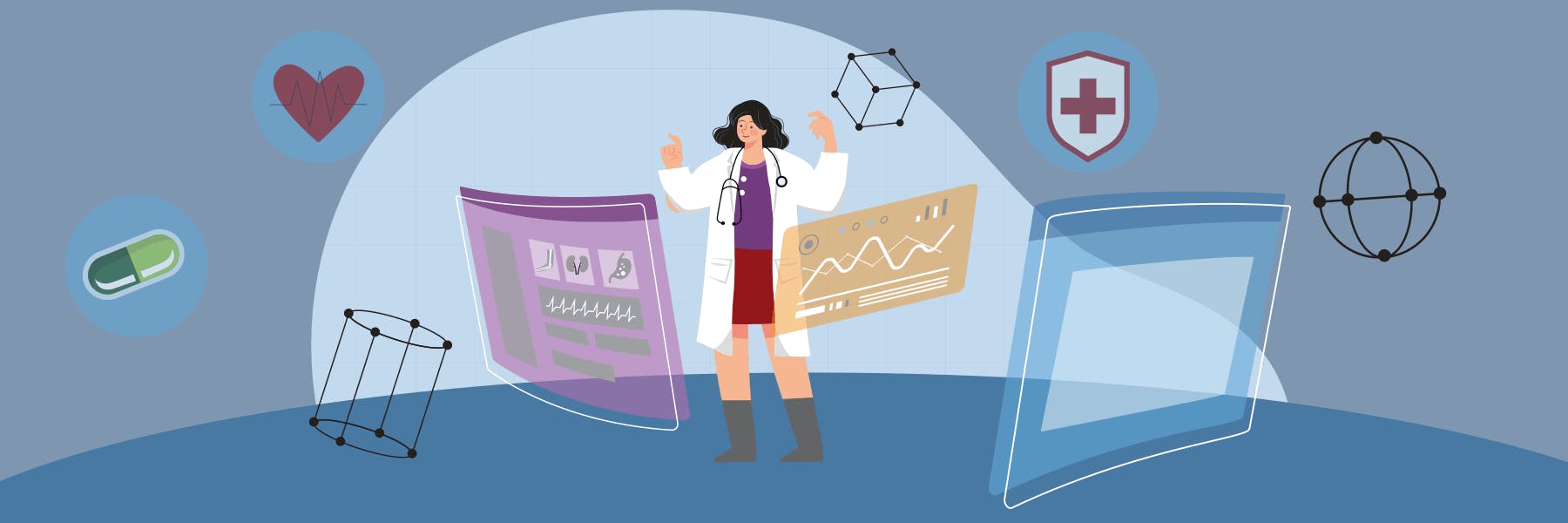How FHIR Led The Interoperability Revolution in Healthcare

Given the vast amounts of sensitive data and stakeholders, healthcare interoperability has for long remained a challenge. Moreover, with the rising concerns around data accuracy, security, and privacy, interoperability is becoming an everyday conversation in the healthcare sector.
Yet, it seems like a lot of those concerns have already become history. And it’s all thanks to the emergence and rapid adoption of FHIR, or Fast Healthcare Interoperability Resources.
Curious? We have answers in today’s blog post. Read on to find out all about FHIR, its features, how it has addressed the challenges to interoperability in healthcare, and how it has proved revolutionary to healthcare organizations worldwide.
Simply put, FHIR aids in healthcare information exchange. You may think of it as a standardized format for electronically exchanging healthcare information containing a set of rules, formats, and protocols that make it easier for different healthcare systems to share data with each other.
FHIR was invented by the healthcare IT standards organization, Health Level Seven International (HL7).

Here are the most known features and benefits of Fast Healthcare Interoperability Resources:

It’s crucial that healthcare organizations, especially in today’s age, implement FHIR to optimize care delivery and improve patient outcomes.
If you’re considering implementing it in your organization, here’s a mandatory list of actions you must undertake:
If you’re seeking an FHIR-compliant healthcare IT solutions provider, feel free to check us out.

Below are some pressing problems with regard to interoperability in healthcare and how FHIR steps into the picture to help:
Healthcare data is bound to contain medical terminology, some of which can be really complex and difficult to understand. Without standardization and uniformity of medical vocabulary, different systems and applications may interpret the same terms differently and cause chaos in healthcare delivery, or worse even, lead to inaccurate or incomplete data exchange.
FHIR solves this by incorporating standardized medical terminologies and vocabularies that ensure consistency and accuracy in data exchange. This not only reduces the risk of misinterpretation of data due to differing interpretations of medical terms, but makes care delivery much less complex.
Patient information is often stored in different data formats and systems. Accurately identifying patients across different healthcare systems and providers can therefore be a challenge. Inconsistencies are sure to pop up. Such errors with patient matching leads to duplicate patient records, missed diagnoses, and delayed treatment and is a concern faced by healthcare providers worldwide.
With its patient matching algorithm, FHIR helps to identify and match patients across different healthcare systems and providers, reducing the risk of duplicate patient records and missed diagnoses.
Interoperability testing is as big a challenge as interoperability itself is. It is done between different systems and applications and is hence a complex and time-consuming process.
There are (often) no standard testing frameworks for it, and different vendors are found using different testing methods and tools, making consistent results a far-fetched dream.
FHR provides a solution to this by offering a standardized testing framework. It means you get consistent and accurate testing of interoperability between different systems and applications.
Healthcare organizations may benefit from financial incentives for maintaining closed systems and proprietary data formats. This cultivates a culture of decreased motivation for investing in healthcare interoperability and may hinder progress towards seamless data exchange.
Being the open standard that FHIR is, it helps make data systems and formats freely available to all healthcare organizations, reducing the cost of implementation and promoting adoption of interoperability solutions for everyone.
Regulations are a central part of healthcare delivery. They influence the cost and quality of healthcare, as well as who can practice medicine and who cannot. However, health regulatory bodies can differ widely between countries and regions, making it difficult to develop interoperability solutions that are compliant with all regulations. Most of these bodies are also slow to change, and hence, keeping up with the pace of healthcare technology advancements is a challenge.
As FHIR is designed to be compliant with existing regulations, such as HIPAA in the United States, it makes it easier for healthcare organizations to develop interoperability solutions that are compliant with regulatory frameworks.
Healthcare organizations are mandated with clear policies and procedures for data governance, including data ownership, data access, and data use. When multiple organizations are involved in the exchange of electronic healthcare information (healthcare data) to deliver patient care, there is an increased risk of information getting lost or mishandled. Records management must include policies and procedures regarding who may have access for what purposes, as well as how this access will be authorized and audited.
FHIR offers robust data governance, such as access control and audits to help ensure that healthcare data is managed and exchanged securely and appropriately.
Social determinants of health, meaning, housing, education, and access to healthy food, have a significant impact on patient health outcomes. However, these are not captured properly in healthcare data records, so it’s difficult for healthcare organizations to develop holistic plans for their patients.
FHIR extends help with this by offering support to capture data for social determinants of health. This in turn ensures that the care plans and delivery by healthcare organizations are not only illness-centric but holistic.
FHIR’s role in revolutionizing healthcare operability is proven and evident as we’ve discussed above. Organizations that adopt this standard get to leverage better patient health outcomes as compared to those that don’t. If your healthcare organization hasn't already embraced interoperability using FHIR, get it done soon. Need help? Feel free to reach out to us.
Related Articles